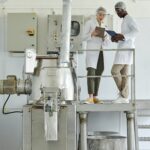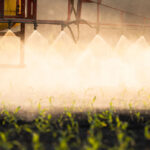Why demonstrated lab proficiency is critical for analysis of baby food ingredients
FDA and the food industry regularly test foods for arsenic and heavy metals, including cadmium and lead. These common food contaminants occur naturally or from pollution in the environment, and levels may also be affected through processing and handling. Organic and conventional crops alike absorb them from soil and water. Their presence in baby food raises a concern because babies are more sensitive to the harmful impacts. There is no known safe level of exposure to these metals; even low levels of contamination are a concern.
Baby food companies, their suppliers, and the food safety agencies that oversee them need reliable, relevant results from lab tests to determine if ingredients meet government and internal safety standards. The Baby Food Council has found that lab proficiency and reporting practices for heavy metals testing are highly variable and can lead to false assurance that an ingredient does not contain the substances. For example, a test result indicating “Below reporting limit” or “0.0” from a laboratory with a high Limit of Quantitation (LOQ) can result in a faulty conclusion that the tested ingredient is appropriate for baby food even when its metals levels are relatively high.
Laboratory Engagement Process
The Baby Food Council developed four criteria to identify labs that were proficient at quantifying arsenic, cadmium, and lead at low levels of concern and recommends that a lab that conducts tests for arsenic, cadmium and lead should:
- Be accredited pursuant to ISO 17025:2017 or equivalent;
- Use an analytical method at least as sensitive Food and Drug Administration’s (FDA) Method EAM 4.7;
- Demonstrate proficiency in quantifying each of these toxics to at least six micrograms of the toxic per kilogram of food (µg/kg); and
- Provide a written report of its results that provides a numerical value to at least 6 µg/kg and does not report them as zero.
Additional information provided in Criteria for Participation below.
The Baby Food Council developed four criteria to identify labs that were proficient at quantifying arsenic, cadmium, and lead at low levels of concern:
– Be accredited pursuant to ISO 17025:2017 or equivalent. The International Organization Standardization (ISO) is an independent, non-governmental international organization whose members include 165 national standard bodies, such as the American National Standards Institute (ANSI). Under the standard, third-party organizations accredit labs that meet the ISO/IEC 17025 Testing and Calibration Laboratories Standard and monitor the labs to ensure compliance. Labs must also implement a quality system designed to improve their ability to consistently produce valid results. The latest version of the standard was published in 2017. The Council will consider claims of equivalency on a case-by-case basis.
– Use an analytical method at least as sensitive FDA’s Method EAM 4.7. In 2014 FDA updated its Elemental Analysis Manual for Food and Related Products (EAM) by adding new Method 4.7 that uses inductively-coupled plasma and mass spectrometry (ICP-MS) as its most sensitive analytical method. The agency uses this manual for its Total Diet Study. Pursuant to FDA Guidelines the Limit of Detection (LOD), the minimum concentration of a substance that can readily be distinguished from zero, for arsenic, lead, and cadmium is 1.3, 1.2, and 0.4 µg/kg respectively. The LOQ, the minimum concentration of a substance that be quantified with acceptable precision, for arsenic, lead, and cadmium is 11.6, 10.9, and 3.7 µg/kg respectively.
– Demonstrate proficiency in quantifying each of these toxics to at least six µg/kg. In early 2020, the Baby Food Council arranged for Fapas Inc., a third-party lab proficiency testing firm, to evaluate labs that volunteered to participate in a study by analyzing four blinded samples of common pureed baby food ingredients prepared by Fapas. Council members and Fapas recruited labs and one member published an open invitation. Fapas spiked three samples and a fourth that was not spiked and had levels six µg/kg. Twenty-eight labs volunteered and all but one provided Fapas with timely results. In its May 2020 report, 14 labs demonstrated proficiency on the three spiked samples with two more resolving questions in follow-up discussion. Seven of these labs also showed proficiency on the challenging unspiked sample. Proficiency meant they had a z-score of less than two. The Council considers all 16 to be proficient and the seven to be highly proficient. It invited all to be evaluated against the four listing criteria. See Fapas 2020 redacted report for details. In 2021, the Council repeated the process with three spiked samples. Ten of 16 participating last had a z-score of less than two on all three samples including two that were already listed. See Fapas 2021 redacted report for details.
– Provide a written report of its results at these levels. For the results to be useful as a best practice to identify and resolve potential problems, the Baby Food Council determined that a listed lab should report: a) a numerical result for any level at or above 6 µg/kg (though it can go lower); and b) identify both its LOD and LOQ. If a lab’s LOQ is above 6 µg/kg, it would have the option to report results between the LOD and LOQ as an estimated value.










